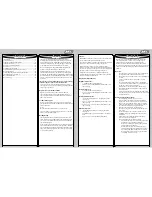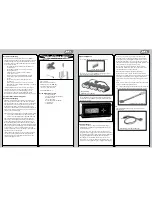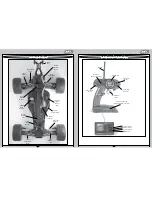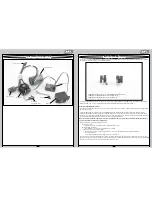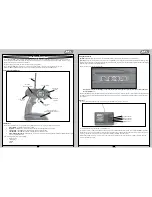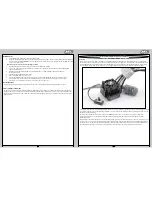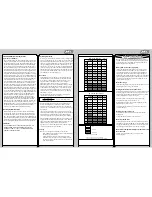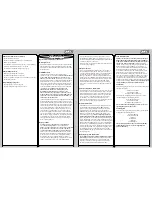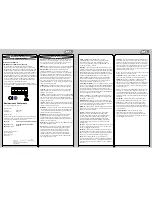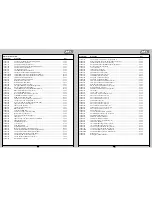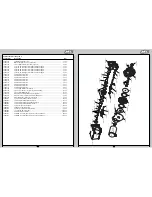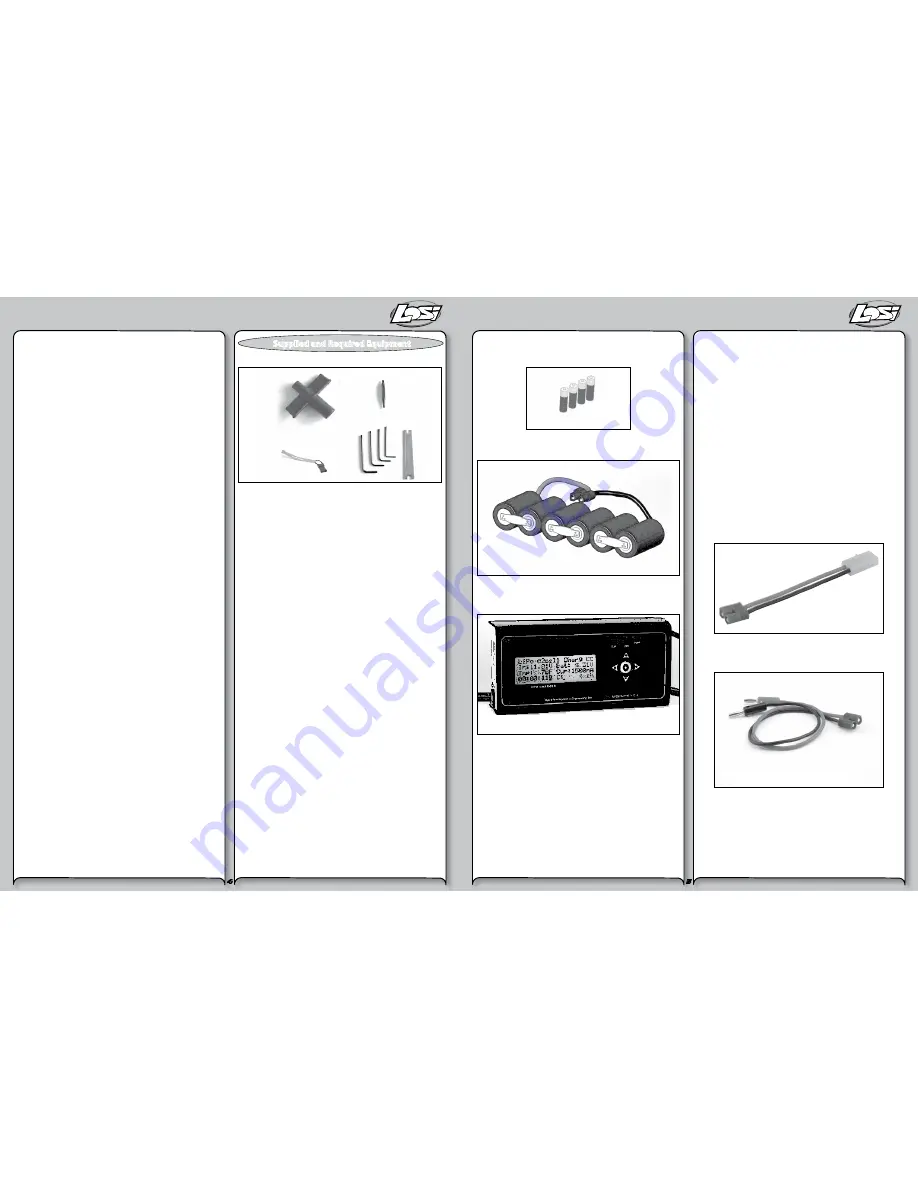
4
5
®
®
Batteries and Charging:
The Speed-T uses rechargeable batteries such as NiMH or
LiPo. These batteries all have special requirements to preserve
performance and last a long time. Read all instructions and
precautions that are provided with the batteries intended to
be used in the Speed-T.
•
Read all instructions provided by the manufacturer
of the batteries.
•
Responsible adult supervision is necessary while
charging batteries.
•
Always check to ensure the polarity of battery
connection is correct.
•
Never leave batteries unattended while charging.
•
Never charge a battery while it is installed in the
Speed-T.
•
Do not charge any battery that appears to have
any damage.
•
If there are exposed wires do not charge or use the
battery until you have installed shrink-wrap or replaced
the complete wire.
If charging NiMH batteries, select a charger to meet your
requirements. Chargers can be of two primary types for
their source of power; a 100-240V wall charger, or one
which requires a 12V power supply. Follow the charger
manufacturer’s instructions and precautions during each use.
Special Consideration for Using LiPo
Batteries and Charging:
Lithium Polymer batteries have gained in popularity for use
in RC vehicles because of their size and power capabilities.
These batteries must be used with special care and handling.
LiPo batteries are only recommended for the experienced
hobbyist with knowledge of handling LiPo batteries who
completely understands the associated risk when using these
batteries. LiPo batteries are extremely sensitive to both over-
charging and over-discharging.
The Speed-T can be used with 2- or 3-cell LiPo batteries ONLY.
•
2-cell is 7.4V and fully charged at approximately 8.4V
•
3-cell is 11.1V and fully charged at approximately 12.6V
The supplied Xcelorin Electronic Speed Control (ESC) can
support up to and including a 3-cell LiPo only. The ESC has
a Low Voltage protection feature that the user must set to
match the battery being used. The ESC will turn on the Red
LED and reduce power to the motor when the battery voltage
has dropped below the cutoff voltage. For LiPo batteries this
is typically 3V per cell, ex: a 3-cell LiPo would have a 9.0V
voltage cutoff. It is the user’s responsibility to ensure that the
LiPo battery is not over-discharged.
It is mandatory that if you choose to use a LiPo battery that
you (the user) read all instructions and safety precautions
supplied by the battery manufacturer. This applies to the
selected LiPo charger as well.
Supplied tools:
2-Way wrench
Radio Adjusting Screw Driver
Transmitter / Receiver BIND Plug
Four (4) Hex Wrench “L” shaped
.050", 1/16", 5/64", and 3/32"
Flat Turnbuckle Wrench
Recommended Accessories:
-
Hobby grade knife
-
CA glue (LOSA7880 or LOSA7881)
-
Needle nose pliers
-
Side cutting pliers
-
Double sided tape (LOSA4004)
-
Safety Goggles
-
Soldering iron
Required Equipment:
Four (4) AA alkaline batteries for the transmitter.
A Six (6) or Seven (7) cell NiMH battery pack. Or with
proper knowledge, LiPo battery packs.
NiMH battery charger with automatic “peak detection”
recommended. Or a Lithium Polymer (LiPo) charger that will
charge a LiPo battery.
Using your charger:
If you do not yet have a charger a peak-detecting charger
will provide the performance required and take care of your
expensive batteries.
A popular choice for a charger would be a peak detection
charger that can be plugged into a household A/C wall socket.
The peak detection portion of the charger monitors the battery
charging and will automatically shut off upon full charge.
The other choice of peak detection charger requires a 12V
power source to charge your batteries. You would need to use
or purchase a hobby grade 12V power supply before charging.
If you are going to be using a charger other than a peak
detection charger it is important to have your battery fully
discharged prior to recharging. Many of these have a 15-20
minute timer that allows you to set to the amount of charge
time. If the battery was not fully discharged from prior use, you
can potentially over charge your battery pack.
Do not charge any battery unattended, and monitor for
heat build up. If the battery pack is more than warm to the
touch immediately discontinue charging.
Read all safety precautions supplied by the charger
manufacture, and also any from the battery manufacture.
Should you use Lithium Polymer batteries (LiPo) you can ONLY
use a charger specifically made for charging LiPo batteries.
For more information regarding LiPo batteries please refer to
page 9.
Below are items which are not included and can be purchased
from your Local Hobby Shop if required.
Charge adaptor (not included) if the selected charger has
a Molex connector, sometimes referred to as a Tamiya Style.
OR
The following lead adaptor if the selected charger uses
banana plugs.
Transmitter Batteries
Charge Adaptor (LOSB9610)
Banana Plugs w/Leads (LOSB9613)
Vehicle Battery
(LOSB9901 or LOSB9902)
Charger
Supplied and Required Equipment


